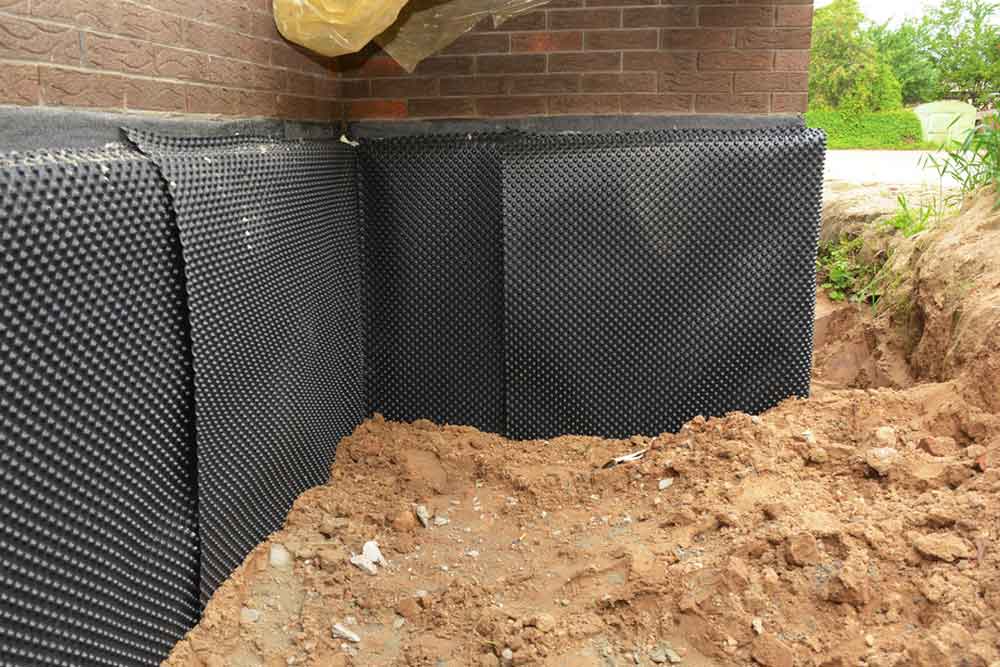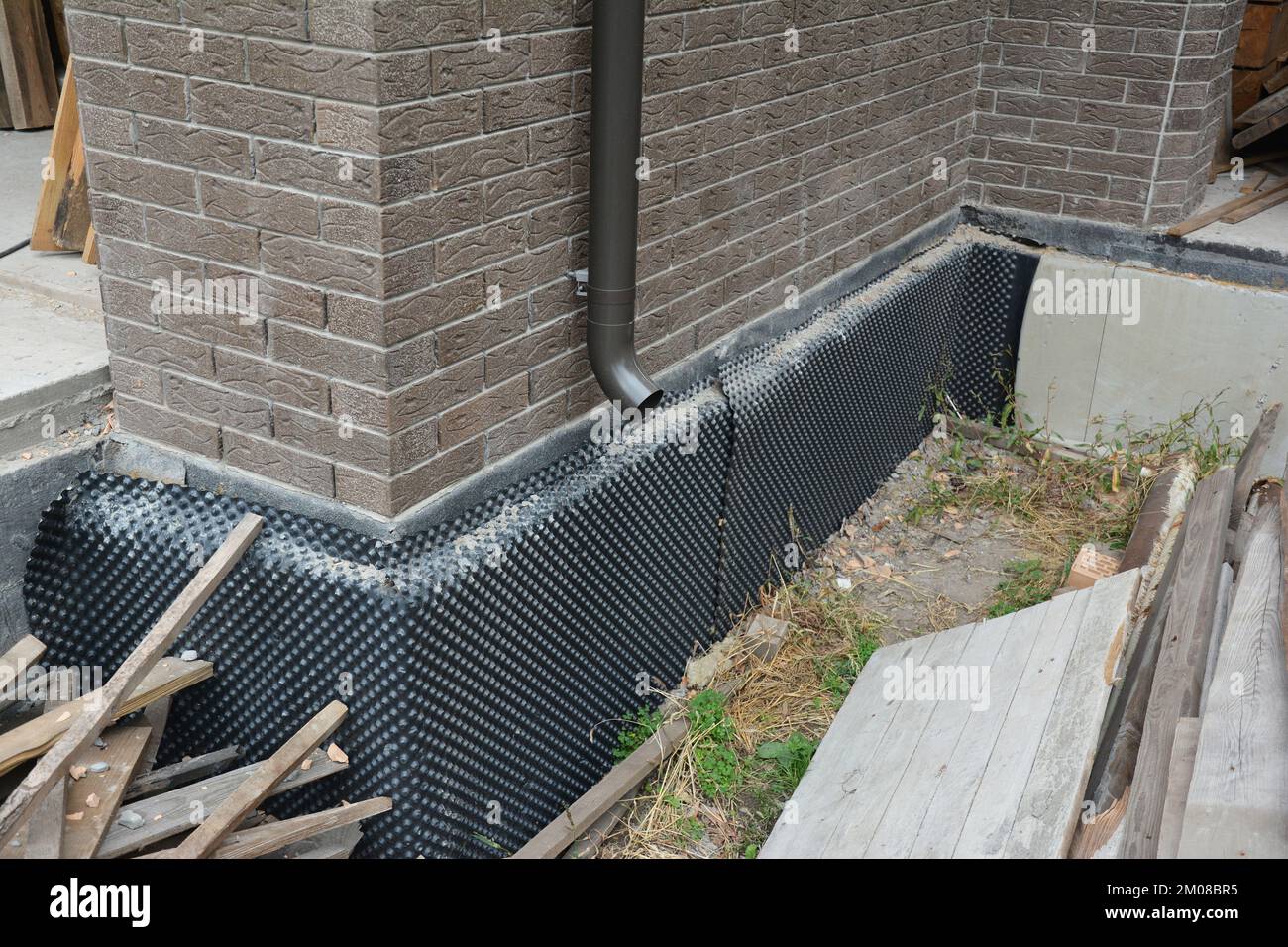How mould removal newcastle can enhance your indoor air quality
How mould removal newcastle can enhance your indoor air quality
Blog Article
Discovering the Numerous Methods and Solutions for Effective Damp Proofing
Dampness in buildings presents considerable challenges to both structural stability and indoor air quality. Different methods and remedies have actually arised to battle this pervasive problem. From standard damp-proof membranes to innovative chemical treatments, each approach uses unique benefits. Understanding these options is essential for efficient moisture control. However, selecting the right solution depends upon details building problems and needs, triggering additional exploration into the most effective moist proofing approaches offered.
Recognizing the Sources Of Moisture
Moisture can occur from various sources, recognizing these reasons is vital for reliable remediation. Frequently, wetness originates from three key sources: rising moist, passing through wet, and condensation. Increasing wet occurs when groundwater takes a trip up through porous materials, such as brick or rock, usually due to an absence of an efficient barrier (damp removal newcastle). Permeating wet is typically triggered by external variables, consisting of roofing leaks, damaged seamless gutters, or harmed wall surfaces, allowing water to infiltrate a building. Condensation, on the other hand, arises from excess wetness airborne, frequently exacerbated by poor ventilation and temperature distinctions, leading to water droplets basing on surface areas. Determining these underlying concerns is vital, as each kind of dampness needs a tailored technique for remediation. Proper evaluation assists in determining one of the most efficient remedies, ultimately securing the architectural integrity of a structure and enhancing indoor air top quality
Typical Damp-Proof Membranes

Chemical Damp-Proofing Solutions
Chemical damp-proofing solutions supply a cutting-edge approach to stop wetness invasion in structures. These techniques normally involve the application of liquid chemicals that permeate stonework and form a barrier versus rising damp. Frequently made use of chemicals consist of silanes, siloxanes, and various other water-repellent representatives that respond with surface materials to produce a hydrophobic layer.The application process usually calls for exploration holes into the wall surfaces, injecting the chemical solution, and permitting it to cure. This technique is particularly useful for older structures where typical damp-proof membrane layers might be unwise. Additionally, chemical damp-proofing can be much less turbulent and much more cost-efficient than considerable improvement projects.While effective, these options depend on proper application and environmental problems for peak performance. Normal upkeep and tracking are important to ensure the durability of the damp-proofing therapy. Generally, chemical damp-proofing stands for a versatile alternative for protecting buildings versus moisture-related damages
Tooth Cavity Wall Construction Methods
Cavity wall building and construction strategies offer countless benefits, specifically in wetness control and energy effectiveness. By integrating an air void between 2 layers of masonry, these wall surfaces properly reduce water access while boosting insulation. This mix not only shields structures from dampness but also adds to reduced power intake.
Advantages of Dental Caries Wall Surfaces
When taking into consideration effective moist proofing methods, the advantages of cavity walls stand out prominently. Tooth cavity wall surfaces contain two different layers, creating an air gap that properly minimizes moisture penetration. This style minimizes the danger of dampness, as the outer wall serves as a barrier versus rain and water access. In addition, tooth cavity wall surfaces boost thermal insulation, which adds to energy efficiency by lowering warm loss. They also supply sound insulation, helping to develop a quieter indoor atmosphere. The air void permits for ventilation, which assists in wetness control and minimizes the probability of mold development. These advantages not just enhance the total comfort of a structure but likewise add to its durability and architectural stability.
Moisture Control Methods
Effective wetness control techniques are crucial in tooth cavity wall surface building and construction to guarantee long-lasting security against dampness. One main approach involves the incorporation of weep openings, which assist in water drain from the dental caries, stopping buildup. Furthermore, using breathable membrane layers can help handle dampness levels while allowing entraped vapor to leave. Proper positioning of insulation is additionally crucial, as it needs to not block water drainage paths. Additionally, ensuring that the external leaves of the dental caries wall surface are constructed with waterproof materials improves general durability. Normal upkeep checks are necessary to recognize any kind of clogs or damages early, securing the structure's honesty. Inevitably, a mix of these techniques develops a robust defense versus wetness invasion in dental caries wall surfaces.
Insulation and Power Efficiency
Insulation plays a vital function in enhancing power efficiency within cavity wall surface construction. By integrating protecting materials, these wall surfaces develop a thermal obstacle that reduces warm loss and lowers energy consumption. Effective insulation not only aids maintain a stable indoor temperature level yet also alleviates the danger of wetness, as it stops condensation within the wall surface dental caries. Numerous strategies, such as the usage of rigid foam boards or mineral woollen, can be employed to accomplish suitable insulation performance. Furthermore, appropriate installation is vital to ensure that voids and gaps are reduced, which can otherwise compromise power efficiency. Ultimately, a well-insulated tooth cavity wall surface contributes significantly to overall sustainability and reduces cooling and heating costs for property owners.
Exterior Damp Proofing Techniques
External damp proofing methods are vital for safeguarding structures from moisture infiltration. 2 effective strategies include the application of waterproof membranes and the installment of French drains pipes. These remedies aid reduce water build-up and protect the integrity of buildings.
Waterproof Membrane Application
While different techniques exist for stopping wetness ingress, the application of water resistant membranes stays a very reliable external moist proofing strategy. These membrane layers are typically made from products such as polyethylene, rubber, or changed bitumen, supplying a durable obstacle versus water penetration. The setup procedure entails applying the membrane to the outside surface areas of foundations or walls, making certain total protection to stop leakages. Appropriate attachment and securing at joints are essential to optimizing effectiveness. Water-proof membranes can be applied in numerous kinds, including fluid coatings and check here sheet membranes, enabling flexibility based on the specific requirements of the structure. This method not just safeguards buildings from dampness but also enhances their longevity and architectural honesty.
French Drainpipe Installment
One reliable approach for taking care of groundwater and protecting against dampness buildup around a building's foundation is the installation of a French drain. This water drainage system includes a trench loaded with crushed rock and a perforated pipeline that reroutes surface water far from the foundation. Proper installation calls for cautious planning, guaranteeing that the drain inclines away from the framework to assist in ideal water circulation. Furthermore, the place of the drainpipe is important; it must be placed in locations prone to pooling or excess dampness. Normal upkeep, including cleaning debris from the crushed rock and making certain the pipe continues to be unblocked, is important for long-lasting efficiency. Eventually, a well-installed French drain can significantly decrease the threat of water-related concerns in structures and cellars.
Inside Waterproofing Techniques
Interior waterproofing strategies are vital for securing a building's inside from wetness seepage and prospective water damages. These techniques typically involve the application of customized materials and methods made to create a moisture barrier within the structure. One usual technique is the use of water-proof coatings or sealers on wall surfaces and floors, which avoid moisture from permeating surfaces.Additionally, mounting indoor water drainage systems, such as sump pumps, can effectively manage water build-up in basements and creep areas. An additional approach includes using vapor barriers, which are mounted to prevent moisture motion from the ground right into living spaces.Moreover, dealing with any type of fractures or spaces in walls or structures with ideal sealants guarantees a complete defense against water breach. By implementing these indoor waterproofing approaches, residential property proprietors can greatly reduce the threat of mold development, structural damage, and other moisture-related concerns. Correct implementation of these methods is vital for long-term protection and structure integrity.
Regular Upkeep and Examination Practices
Routine maintenance and inspection techniques are essential for ensuring the long-term effectiveness of damp proofing remedies in any type of building. Regular checks allow property proprietors to determine very early indications of moisture breach, such as peeling paint, mold and mildew development, and moldy smells. These signs can signify underlying problems that require immediate attention.Inspections need to be carried out at the very least every year, focusing on at risk areas like cellars, crawl rooms, and exterior wall surfaces. During these analyses, homeowner need to take a look at sealants, water drainage systems, and ventilation to confirm they operate correctly.Additionally, maintaining rain gutters and downspouts is necessary, as clogged systems can cause water buildup near the foundation. Carrying out a regular maintenance timetable, along with timely repair services, can substantially extend the life expectancy of moist proofing actions and protect the structural honesty of the structure. Proactive steps eventually add to the total health and safety of the living atmosphere.
Frequently Asked Concerns
The Length Of Time Does Damp Proofing Usually Last?
The period of damp proofing effectiveness varies, normally lasting in between 20 to 50 years. Factors such as application high quality, environmental conditions, and maintenance techniques significantly influence the longevity of the moist proofing therapy.

Can I Damp Evidence My Home Myself?
The specific contemplated the expediency of DIY damp proofing. With correct research study and the best products, it is possible. Nonetheless, they additionally recognized the value of specialist assistance to assure resilient effectiveness and prevent future concerns.
What Are the Indicators of Inefficient Damp Proofing?
Signs of inefficient moist proofing consist of relentless stuffy smells, visible mold development, peeling paint, wet spots on walls, and timber degeneration - mould treatment newcastle. Property owners should resolve these problems immediately to stop further damage and wellness problems
Does Damp Proofing Affect Indoor Air High Quality?
Just How Much Does Professional Damp Proofing Expense?
Specialist moist proofing prices vary significantly, generally varying from $1,000 to $5,000 depending on the property's size, the level of the damp problem, and picked methods. Each circumstance requires a tailored analysis for accurate prices. Generally, dampness originates from 3 key resources: increasing wet, penetrating damp, and condensation. When thinking about reliable damp proofing methods, the advantages of tooth cavity wall surfaces stand out plainly. Exterior wet proofing methods are vital for shielding frameworks from moisture infiltration. While various methods exist for stopping dampness access, the application of water-proof membrane layers continues to be a highly effective exterior moist proofing method. Indicators of ineffective moist proofing include consistent moldy odors, visible mold development, peeling off paint, moist patches on walls, and wood decay.
Report this page